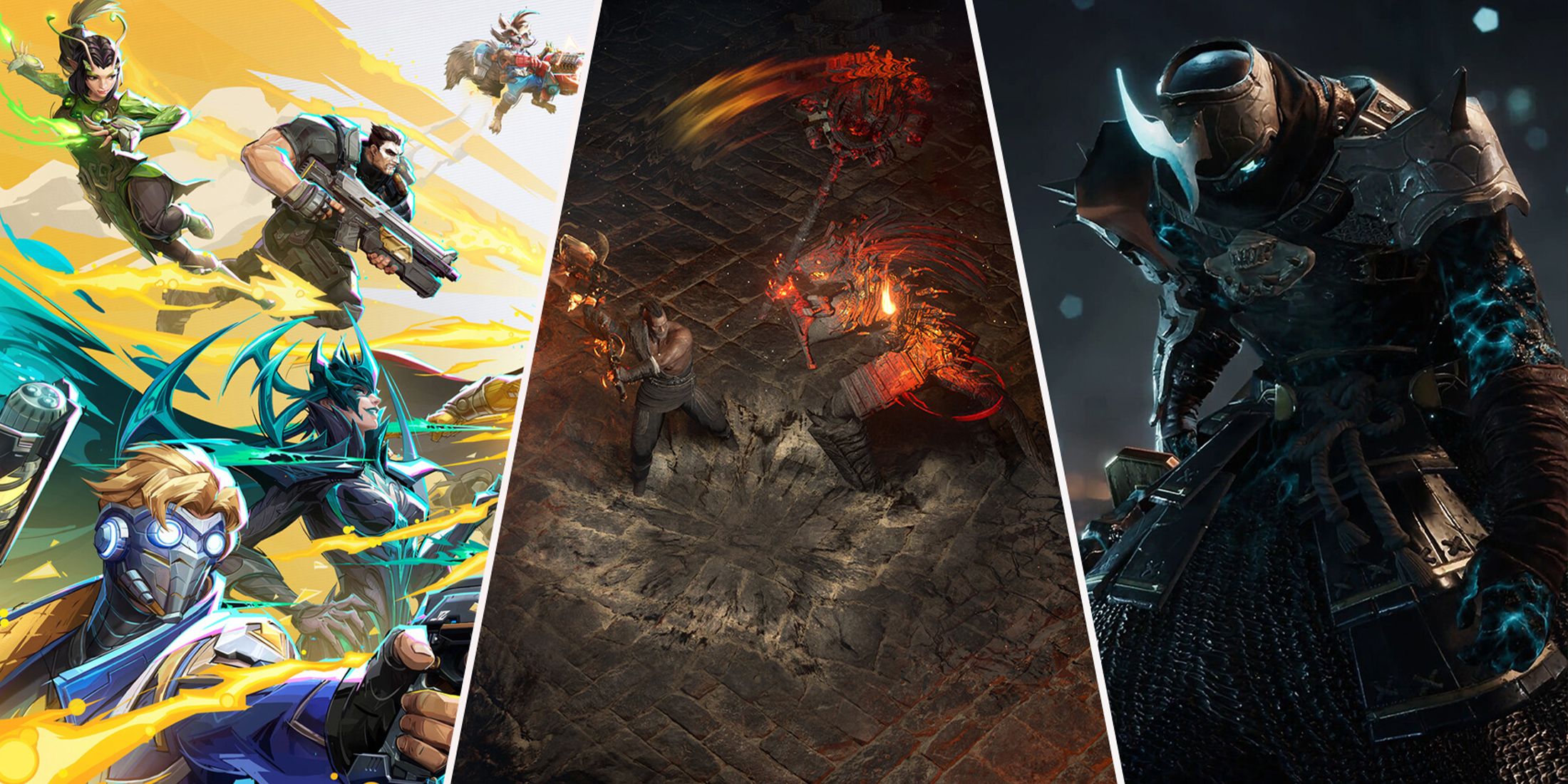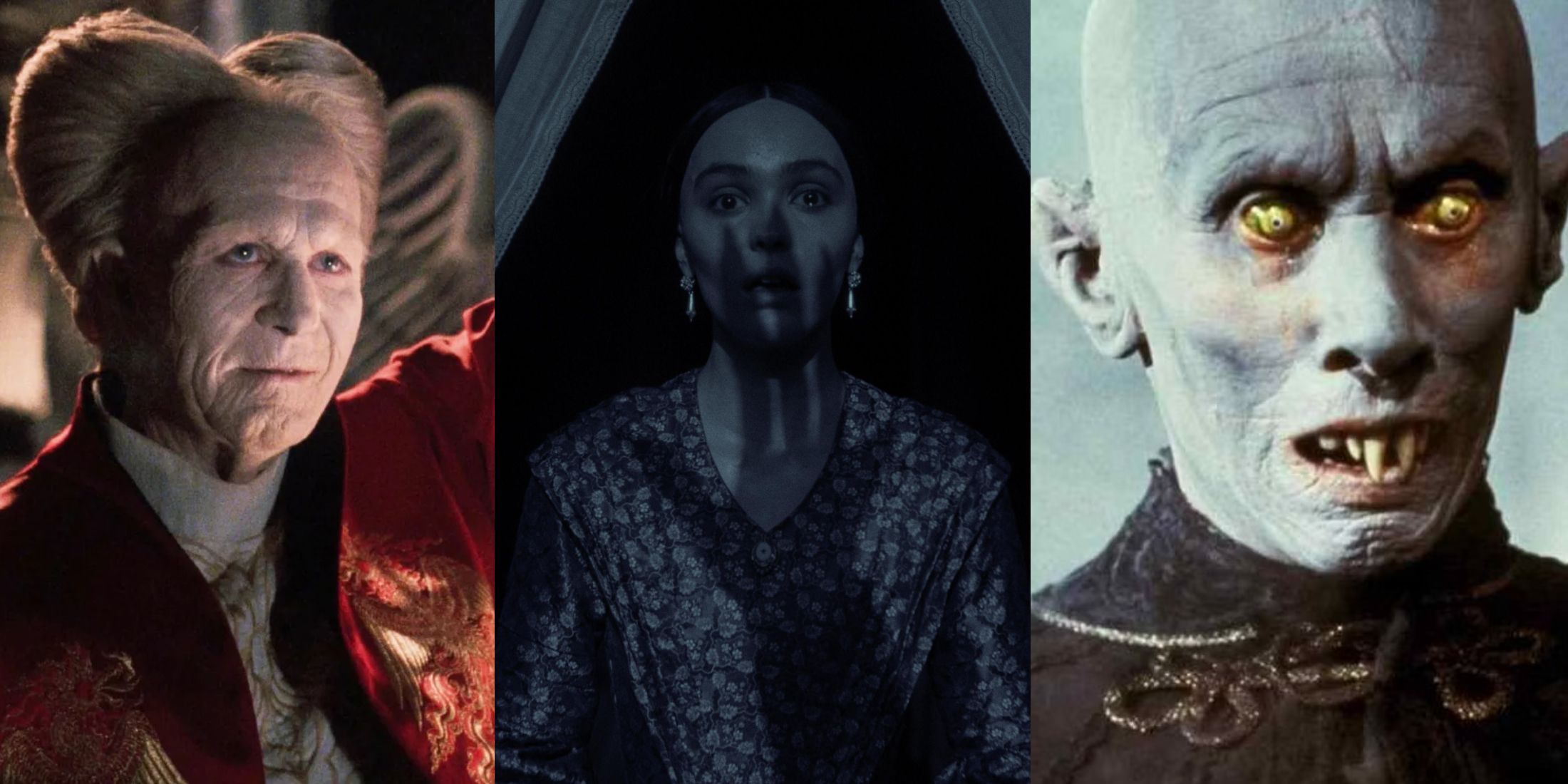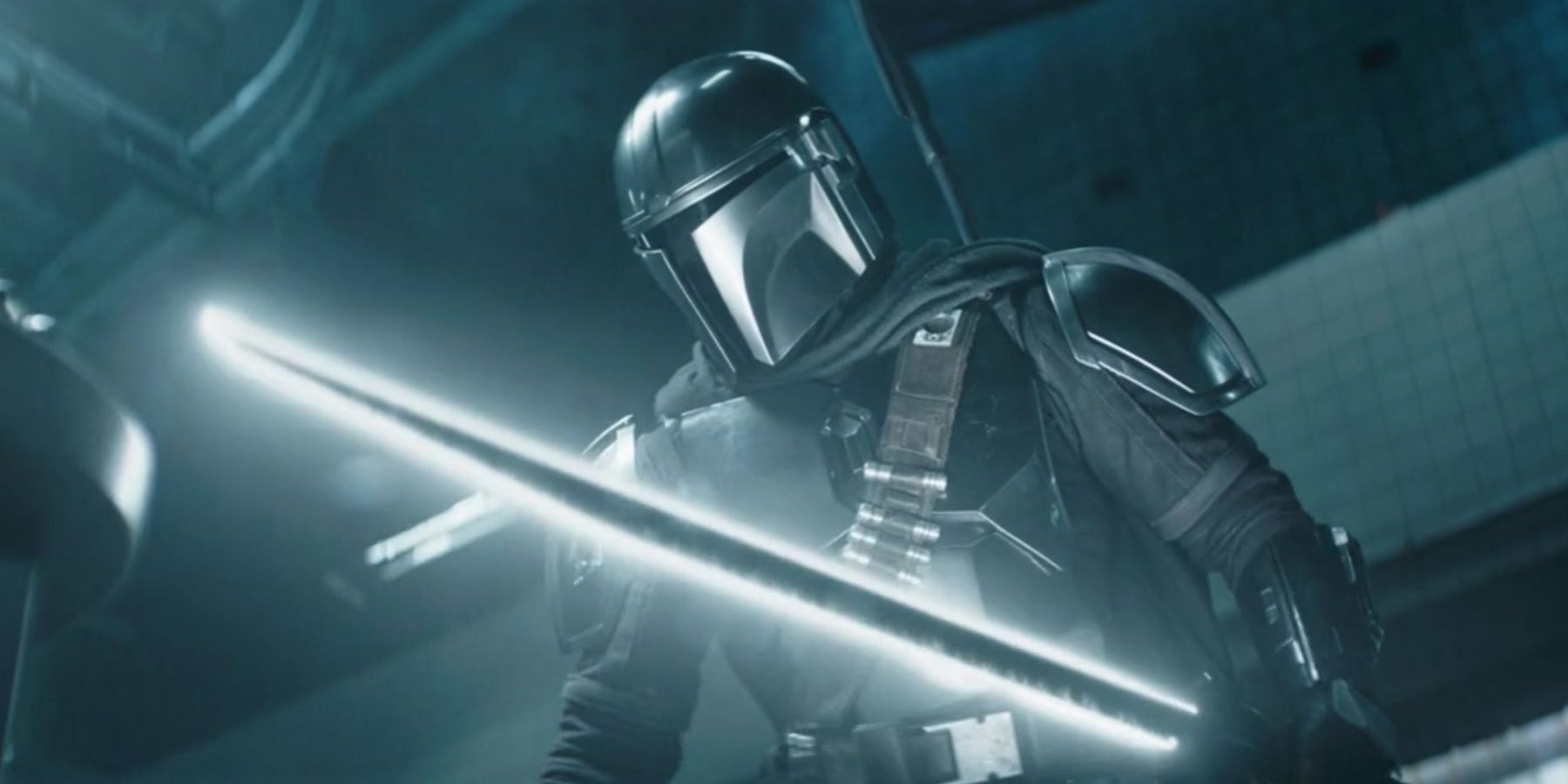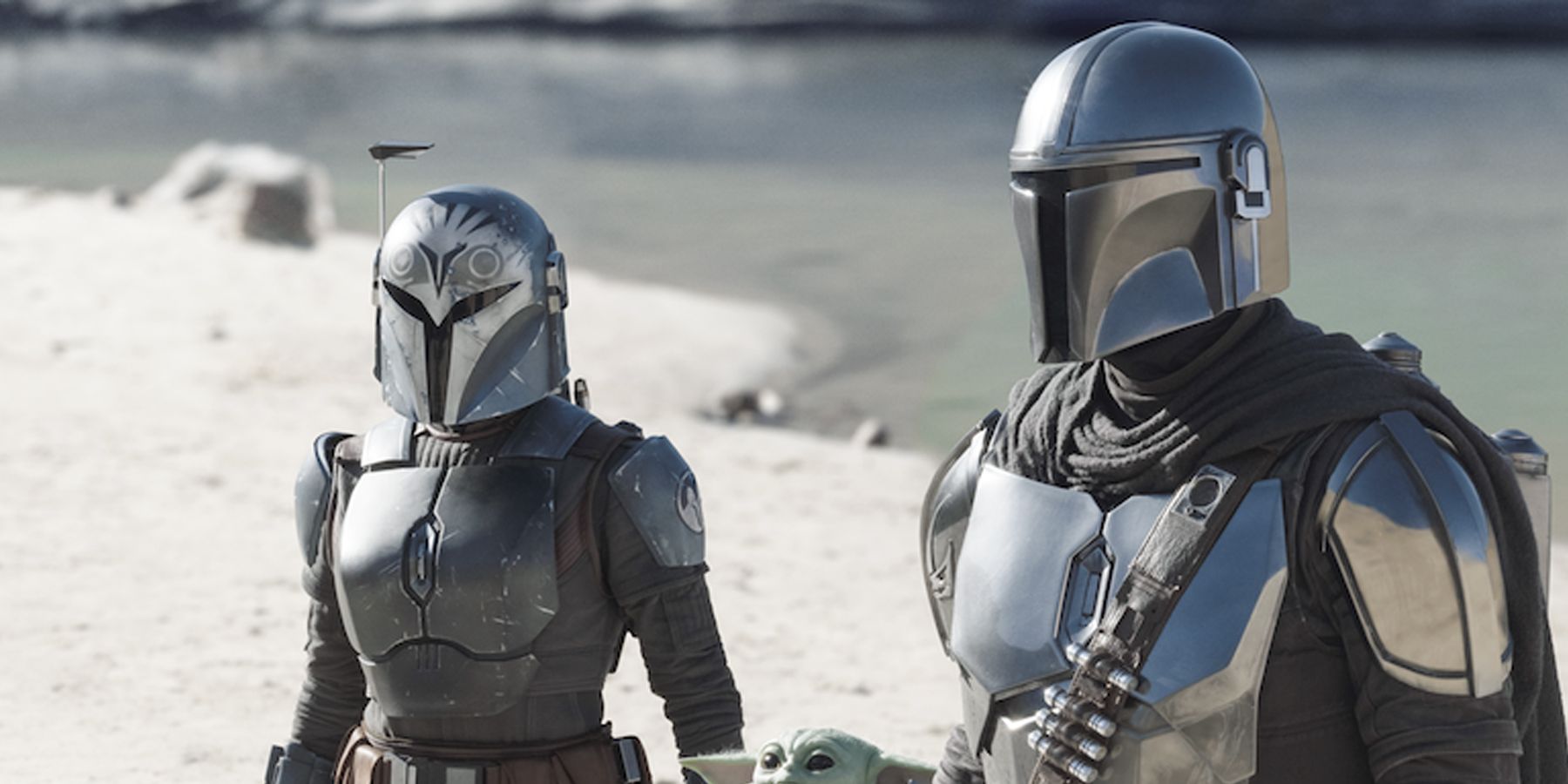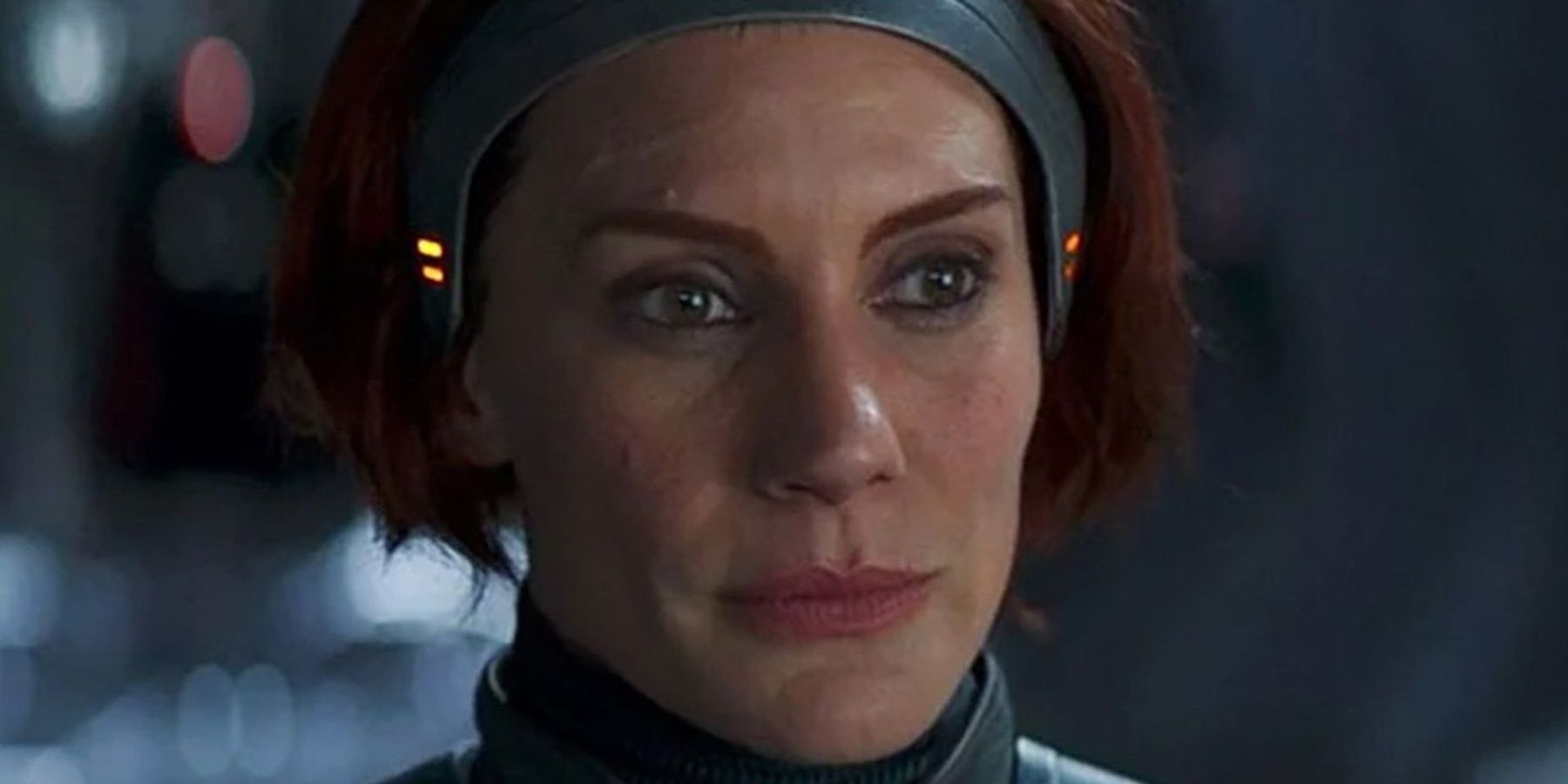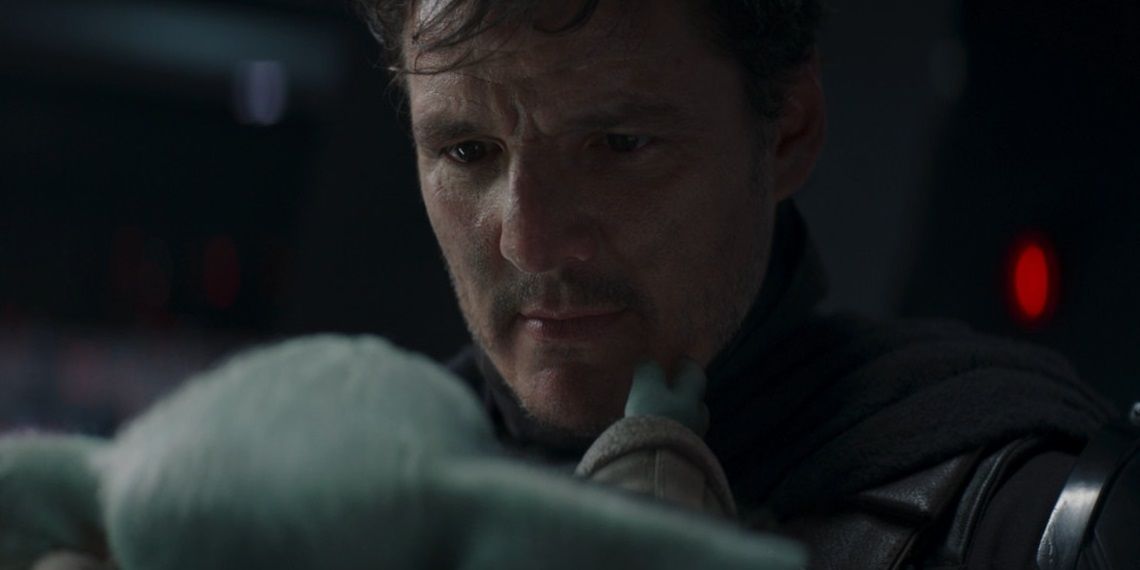After decades of Expanded Universe fiction and fan theories, The Mandalorian finally let Star Wars fans into the secretive world of its titular warrior society. As engaging as the armored warriors are to watch, their rules seem a bit strict. The most unusual regulation of the Mando creed governs their iconic helmet. Why is it so important that they cover their face, and why do some Mandalorians ignore that law?
The Mandalorians, like a lot of Star Wars lore, existed as minor background details in the early films, Fans got obsessive about these minor details, forcing creators and fans to flesh them out. This gradual growth results in a variety of strange details and conflicting pieces of information. Most corners of the galaxy far far away have this issue, and Mandalore is no exception.
The Helmet Represents the Mandalorian Way
Din Djarin is one of the finest Mandalorians the race has ever seen. He's a top-shelf warrior, an unflappable bounty hunter, and a dedicated guardian to his foundling. He defeated one of the clan's greatest enemies in ritual combat with their culture's Excalibur. They should be putting him on posters and telling foundlings bedtime stories about his adventures in hopes that they'll follow in his footsteps. Yet, as all those who saw the bizarre digressions in The Book of Boba Fett, Djarin will be entering season three of his show as a man without a tribe. The Armorer, the woman that raised him, has declared him no longer a Mandalorian. It seems as if all of his positive qualities have been forgotten the moment he took off his helmet.
According to The Way, Mandalorians are not allowed to remove their helmets. If another being sees a Mandalorian warrior without their helmet, they're forbidden from ever donning it again. This rule seems relatively straightforward, if extremely cumbersome, but its enforcement is harsh. There is apparently a way to get back into the clan's good graces. The Armorer tasks Djarin with washing himself in the "living waters" of their home planet, which will evidently atone for his sin. While Djarin and The Armorer take this matter more seriously than most take their medical care, other practicing Mandalorians aren't so bothered by the rule. It turns out, the helmet aspect of the code is only for hardcore traditionalists.
Some Take The Mandalorian Way More Seriously Than Others
Simply put, Din Djarin isn't the average Mandalorian. He's part of an extremist sect called Death Watch that holds the rules in a place of higher esteem than most. Bo-Katan, the former matriarch of the larger clan, describes Djarin's people as "religious zealots that broke away from Mandalorian society." It's fair to assume that there was a time when the average Mando would be forever shamed for removing their helmet, but that isn't the default belief of most of the remaining population. This mirrors real-world religions, in which some followers find it very important to maintain old traditions while others feel the need to modernize their faith. As such, Djarin is only an apostate to his little slice of the tribe. He could easily connect with the larger body of surviving Mandalorians and be welcomed as the champion he is. Fans will have to wait and see whether Djarin will stick to his metaphorical guns or distance himself from the old ways.
Mandalorians Can Remove Their Helmets Under One Condition
Even under the Draconian rules of Death Watch, Mandalorians can remove their helmets when they're alone. For practical purposes, Djarin is free to put the headgear aside whenever he's by himself. The alternative would likely leave Mando and his colleagues in extremely unpleasant unwashed conditions and trap them in a mostly liquid diet, so the rule makes sense. Migs Mayfeld raises an interesting question as Djarin is forced to remove his helmet in the process of a mission. He asks whether the rules forbid removing the helmet or whether it governs a Mandalorian showing their face. If he can cover his face with a paper bag or one of those Venetian masks on a stick, his options are a lot more open. Unfortunately, Djarin fails to clarify, so fans are left in the dark.
The strict rules about wearing helmets make the life of a Mandalorian feel a bit more complex. Some of these harsh religious rules may provide the discipline necessary to become a warrior, but others seem to be somewhat arbitrary. Would Din Djarin be any less of a hero if he occasionally popped off his headgear in conversation? Evidently not, because doing so has only made him more effective than he ever was before. Din Djarin will have to reckon with his choices in the next season of The Mandalorian, but it's fair to say that the helmet policies aren't what make Mando the man he is today.

